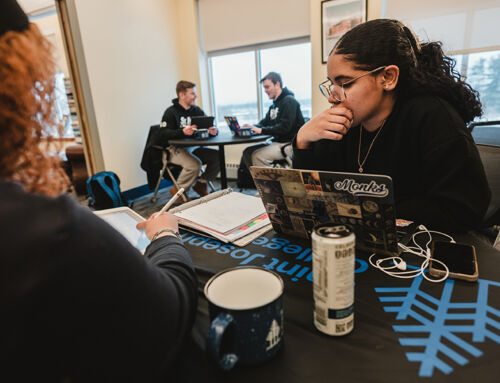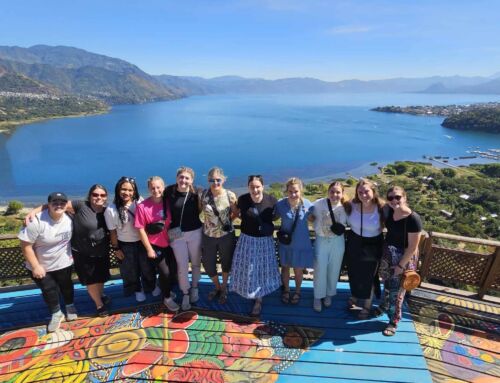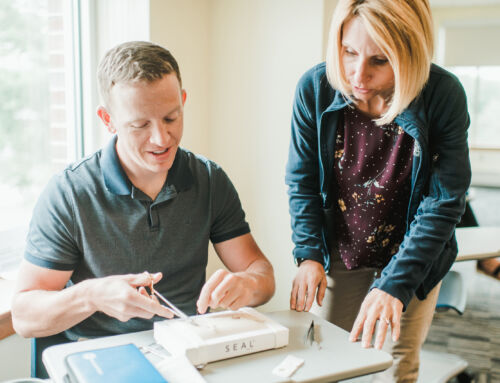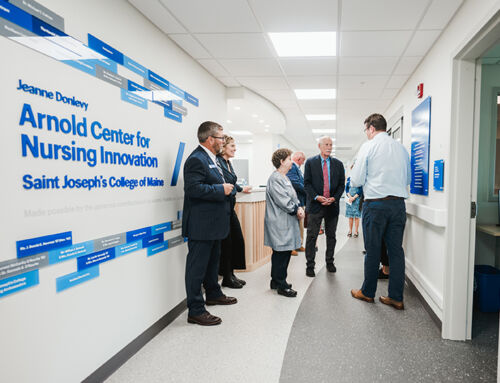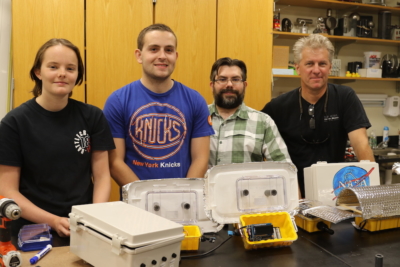
This summer, Saint Joseph's College hosted a Maine Space Consortium Grant MERITS student, Annie deCastro from Falmouth High School, as part of its communications nanosatellite research team. (L to R): Annie deCastro (Falmouth High School) and Kevin McWilliams '20, Dr. Ryan Dorland, and Dr. Steve Jury (all of Saint Joseph's College) stand behind an array of sensor boxes that they designed and built for several research projects. Photo: Patricia Erikson.
by Patricia Erikson
The NASA-Maine Space Grant Consortium held their Celebration Day for the Maine Research Internships for Teachers and Students (MERITS) Program on the Saint Joseph’s College campus on Friday, August 3rd. The MERITS Program provides six-week summer research opportunities to Maine high school juniors in host institutions across the state. Celebration Day provided the opportunity for research presentations by students who were hosted by Saint Joseph’s College, University of Maine, University of Southern Maine, Colby College, the Wells National Estuarine Research Reserve, RLC Engineering, and Mobility Technologies. MERITS students are interested in STEM fields and want to experience “real-time” applications of STEM in a research-focused work world conducting research and technology development.
As one of the hosting institutions, Saint Joseph’s College brought Annie deCastro (Falmouth High School '19) onto a research team that is striving to build a communications nanosatellite and to help Maine launch its first Cube Satellite, in collaboration with the National Air and Space Administration (NASA). Dr. Ryan Dorland, Assistant Professor of Sciences at Saint Joseph’s College, was awarded a one-year research grant for $20,000 from NASA through the Maine Space Grant Consortium (MSGC) to introduce satellite science and build nanosatellite prototypes in introductory calculus-based physics labs. This funding led to the creation of the nanosatellite team research project.
Co-Principal Investigator Dr. Dorland explained, “We are one of the first colleges in the state working on this; we’re on the ground floor with NASA. The goal is to connect the sensor boxes together wirelessly and gather fine-grained data from a dispersed area all at once. Then we can connect to small satellites to gather data in remote locations where no cell or radio signal exists. Designing a small satellite is part of this project. We won’t be building the satellite, but we will complete a conceptual design and build a prototype.”
deCastro said “I do robotics at school. These electronics and trouble-shooting skills overlap a lot with what I’m doing here at Saint Joseph’s College. I had an inclination toward engineering already, then, I applied to the MERITS program and got in. They helped place me into a project here at Saint Joseph’s for the summer for six to eight weeks. This gives me hands-on experience and an opportunity to confirm my interest in STEM.” deCastro spent the summer building sensor boxes and testing them on a number of NASA-funded projects on campus, in collaboration with Saint Joseph’s College students and faculty.
For more about Sciences and science scholarships at Saint Joseph's College, see www.sjcme.edu/science.
